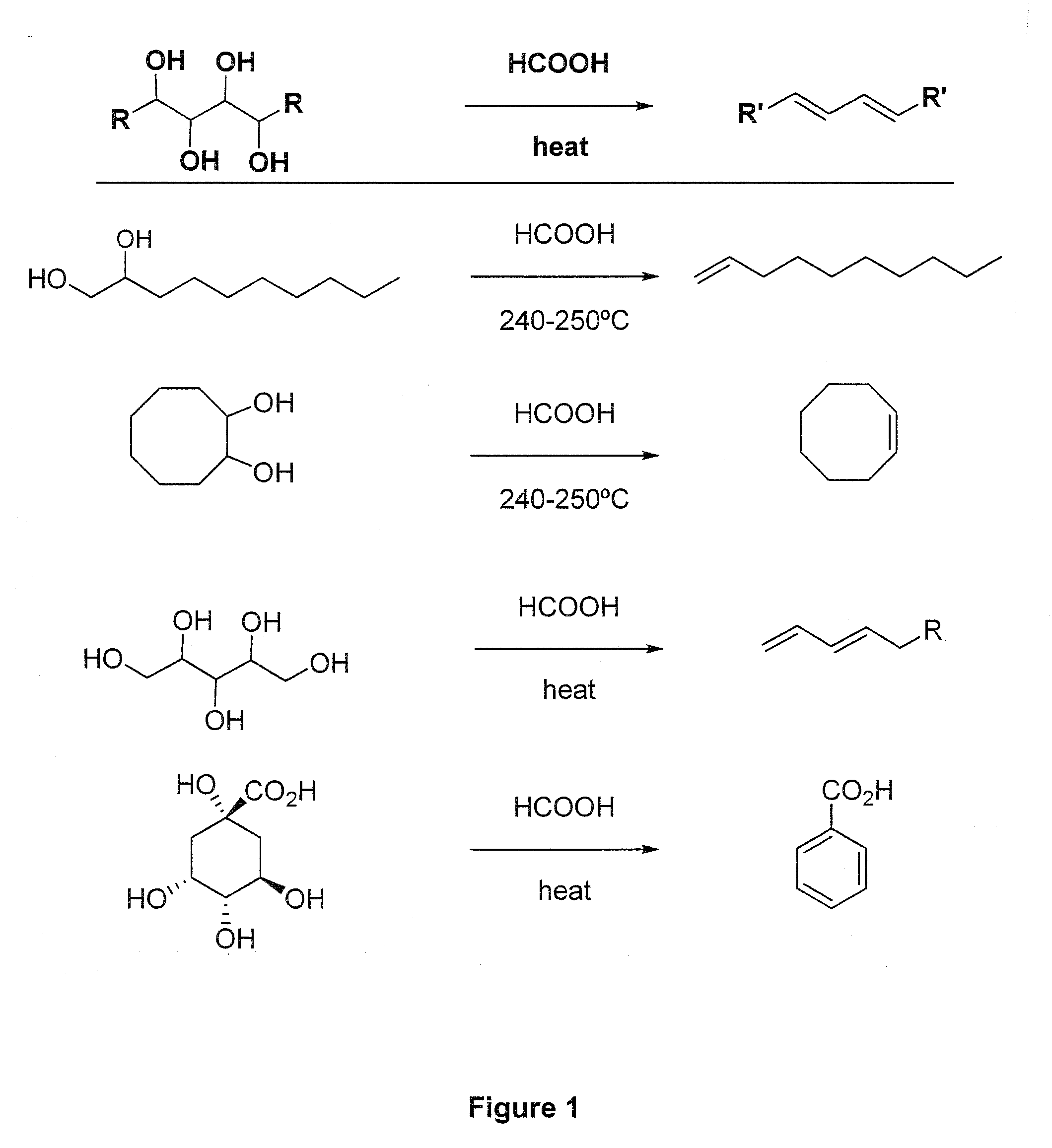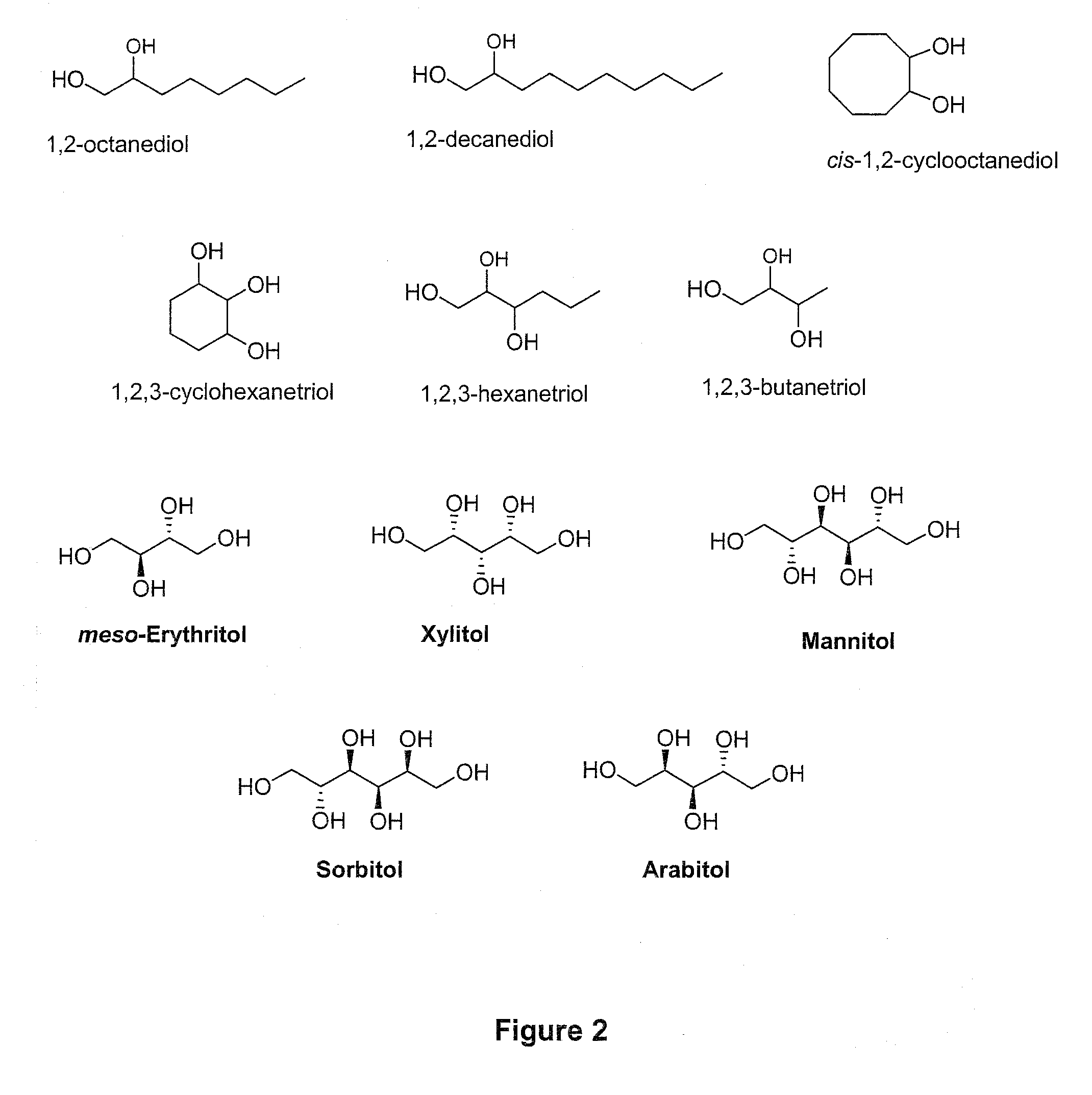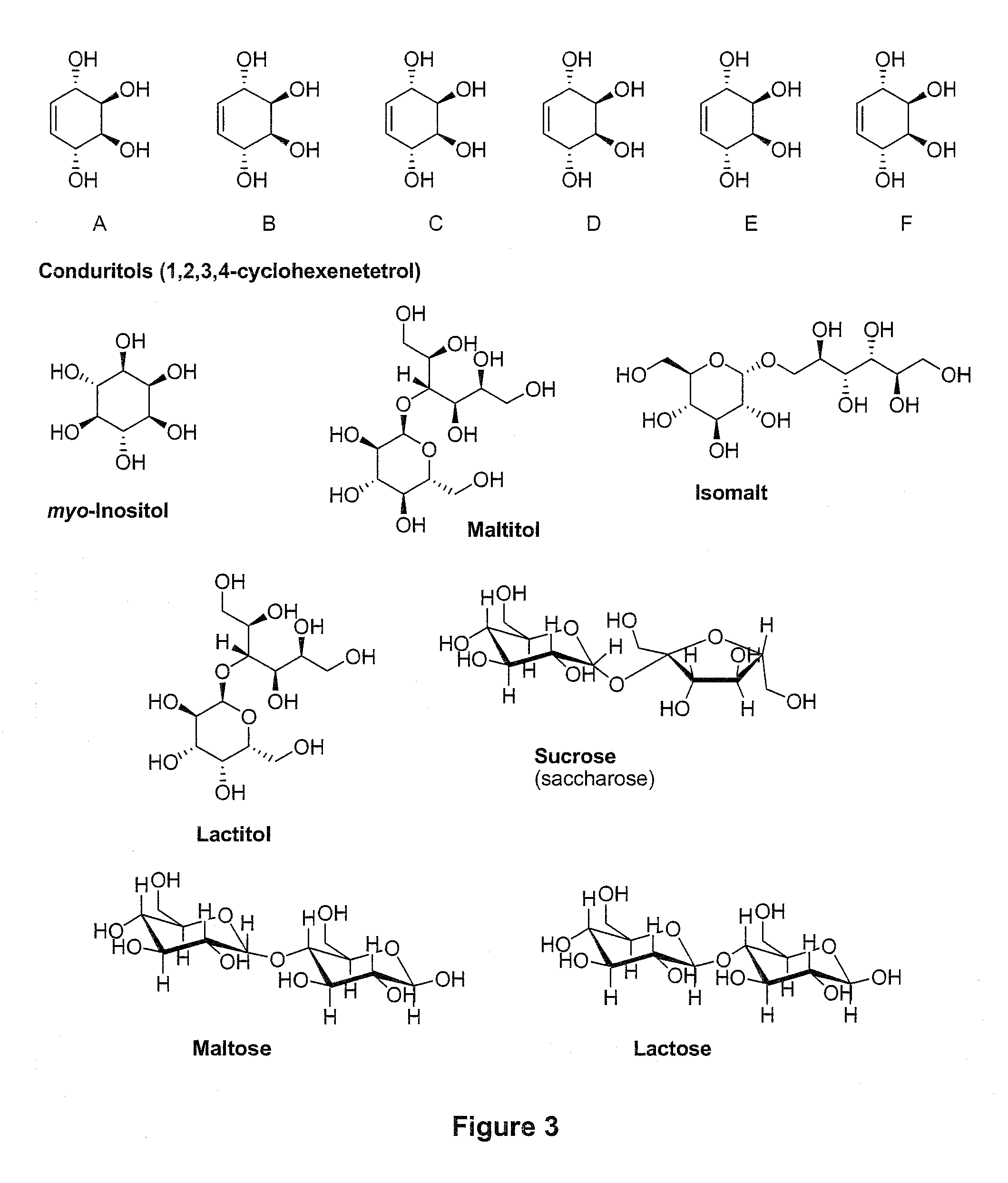Method of Converting a Polyol to an Olefin
a polyol and olefin technology, applied in the field of biodiesel, can solve the problems of insufficient synthesis of most effective synthesis in open literature, many years ago, and no industrial process for large-scale preparation of allyl alcohol from glycerol, and achieve the effect of high purity and sufficient yield
- Summary
- Abstract
- Description
- Claims
- Application Information
AI Technical Summary
Benefits of technology
Problems solved by technology
Method used
Image
Examples
example 1
Preparation of Allyl Alcohol
[0061]In a 100 mL three neck round-bottomed flask are placed 150 mmol (13.8 g) of glycerol and 89 mmol of 85 to 99 percent formic acid. The flask is connected with a condenser set: fractioning column, reflux condenser and collecting flask. The temperature in the reaction mixture is monitored by a thermometer. A tube is run from the side arm of the distilling flask to a bubbler containing sodium hydroxide solution. For example, sodium hydroxide dissolved in water for a final concentration of 0.1 M, however, other concentrations of sodium hydroxide can be used.
[0062]Nitrogen was bubbled through the mixture, using a perforated tube immersed in the solution, for 20 minutes at room temperature. The mixture was then heated over a preheated sand bath, with continuation of the nitrogen bubbling. The temperature was raised gradually, until a temperature of 235° C. was reached after 30 minutes. Under these conditions, distillation of the product takes place over ab...
example 2
Large-Scale Process of Allyl Alcohol Synthesis
[0063]The reaction 1.1 can be carried out as a large-scale process. Calculated amounts of glycerol and a carboxylic acid such as formic acid to form a reaction mixture can be provided to stainless steel vessels for distillation. In a particular embodiment, one may use heating coils surrounding the vessels to enable distillation of allyl alcohol. The temperature in the reaction mixture is monitored. The vessel containing the reaction mixture is also connected to a bubbler containing sodium hydroxide solution. For example, sodium hydroxide dissolved in water can be used.
[0064]Nitrogen is bubbled through the mixture, for example, by using a perforated tube immersed in the solution, for a sufficient time at room temperature. The reaction mixture is then heated with continuation of the nitrogen bubbling. The temperature is raised gradually, until a temperature of between about 230 and about 240° C., such as about 235° C., is reached. Under th...
example 3
Large-Scale Process of 1-Octene Synthesis
[0065]In a 50 mL three neck round-bottomed flask are placed 20 mmol (2.92 g) of 1,2-octanediol. The flask is fitted with a distillation set: fractioning column, reflux condenser and collecting flask. The temperature is monitored by a thermometer immersed in the reaction mixture. A tube is run from the side arm of the distilling flask to a bubbler containing sodium hydroxide solution. An example would be sodium hydroxide dissolved in water for a final concentration of 0.1 M; however, other concentrations of sodium hydroxide can be used.
[0066]The flask is heated at about 60° C. until the starting material is melted, and then 12 mmol of 95 percent formic acid (95%, aqueous) is added. Nitrogen is bubbled through the mixture, using a perforated tube immersed in the solution, for 20 minutes at that temperature. The mixture is then heated over a preheated sand bath, with continuation of the nitrogen bubbling. The temperature rises gradually until a ...
PUM
| Property | Measurement | Unit |
|---|---|---|
| Temperature | aaaaa | aaaaa |
| Temperature | aaaaa | aaaaa |
| Temperature | aaaaa | aaaaa |
Abstract
Description
Claims
Application Information
 Login to View More
Login to View More - R&D
- Intellectual Property
- Life Sciences
- Materials
- Tech Scout
- Unparalleled Data Quality
- Higher Quality Content
- 60% Fewer Hallucinations
Browse by: Latest US Patents, China's latest patents, Technical Efficacy Thesaurus, Application Domain, Technology Topic, Popular Technical Reports.
© 2025 PatSnap. All rights reserved.Legal|Privacy policy|Modern Slavery Act Transparency Statement|Sitemap|About US| Contact US: help@patsnap.com



